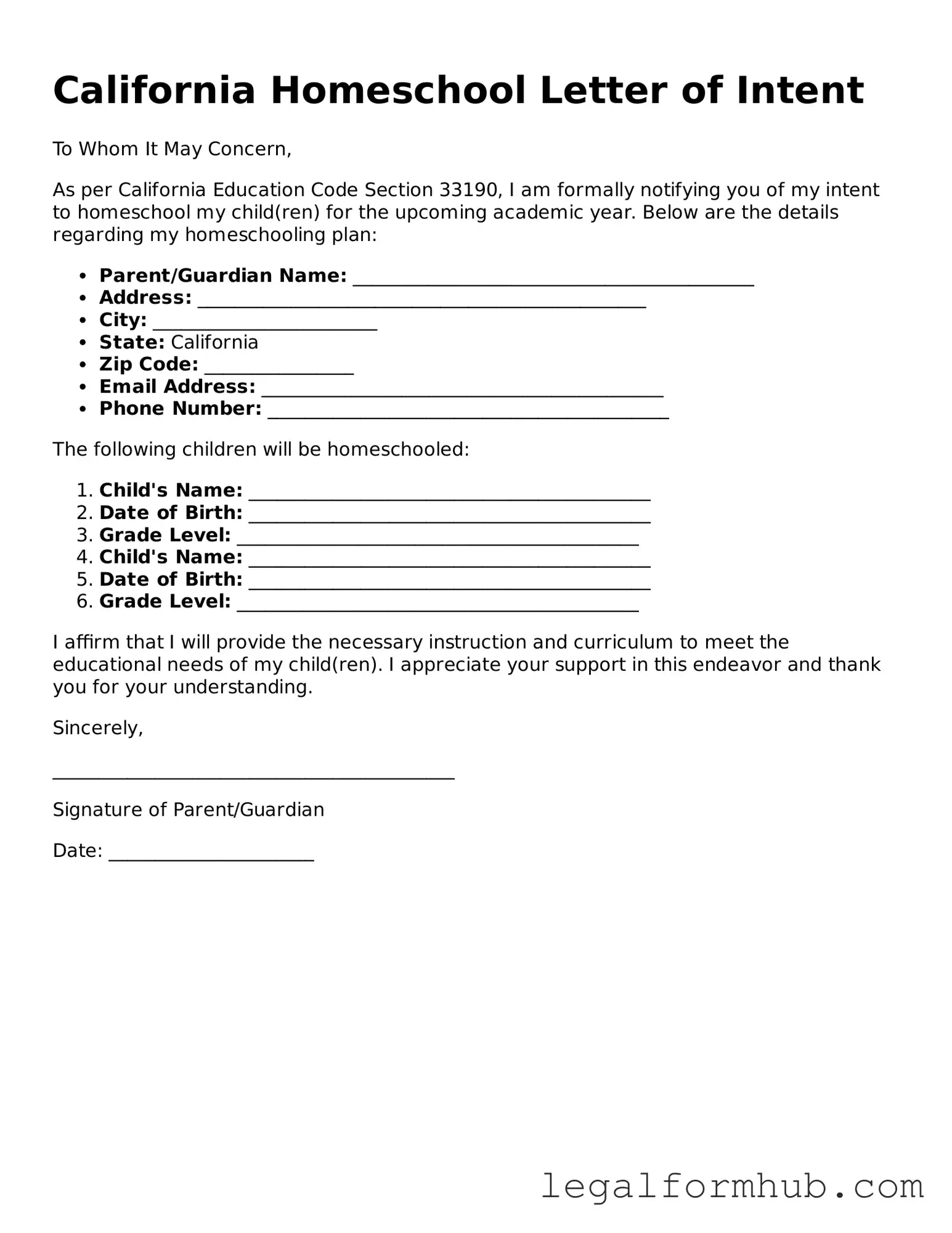The California Homeschool Letter of Intent form shares similarities with the Private School Affidavit. Both documents serve as formal notifications to the state regarding educational choices outside the traditional public school system. Just as the Homeschool Letter of Intent outlines the intent to homeschool, the Private School Affidavit establishes the existence of a private educational institution. Each document requires basic information about the educational setting, ensuring compliance with state regulations regarding alternative education options.
Another document akin to the Homeschool Letter of Intent is the Notice of Intent to Withdraw from Public School. This notice is essential for parents wishing to remove their children from public schooling. It formally informs the school district of the decision to homeschool. Like the Homeschool Letter of Intent, it emphasizes the parents' commitment to providing education and requires submission to the relevant educational authorities.
The Individualized Education Program (IEP) also bears some resemblance to the Homeschool Letter of Intent. While the IEP is specifically designed for students with special needs, both documents highlight the educational path tailored to a child's unique requirements. The IEP outlines specific goals and accommodations, much like how the Homeschool Letter of Intent reflects a family's educational philosophy and approach.
The Affidavit of Support can be compared to the Homeschool Letter of Intent in terms of its purpose of establishing a formal commitment. While the Affidavit of Support is primarily used in immigration contexts to demonstrate financial responsibility, both documents require clear declarations of intent. They serve as official records that affirm the signer's commitment to a particular course of action—education in the case of homeschooling.
The Enrollment Form for a Charter School is another document similar to the Homeschool Letter of Intent. Both forms are used to declare educational choices and intentions. While the Enrollment Form is specific to charter schools, it still requires parents to provide information about their child’s education, paralleling the information requested in the Homeschool Letter of Intent.
The Application for a Private School Exemption also aligns with the Homeschool Letter of Intent. This application allows parents to declare their intent to operate a private school and outlines the educational framework they will follow. Both documents necessitate a clear statement of educational intent and the structure under which education will be provided.
For those looking to document their motorcycle sale properly, understanding the requirements of a Motorcycle Bill of Sale is crucial. This important document facilitates the transaction, ensuring everything is in order. To get started, review our detailed guide on the essential Missouri Motorcycle Bill of Sale here: essential Missouri Motorcycle Bill of Sale.
The Certificate of Enrollment in a Homeschool Program bears similarities as well. This certificate is issued once a family registers their intent to homeschool. It serves as official documentation that the family has complied with state requirements, much like the Homeschool Letter of Intent, which notifies the state of the family's educational choice.
The Notification of Home Schooling form in other states also reflects the same principles as the California Homeschool Letter of Intent. While each state may have different requirements, the core purpose remains the same: to inform the state of a family's choice to homeschool. Both documents require essential information about the educational plan and the children being homeschooled.
Finally, the Annual Assessment Report is comparable to the Homeschool Letter of Intent in that it is part of the ongoing documentation required for homeschooling. While the Letter of Intent declares the intention to homeschool, the Annual Assessment Report evaluates the progress made during the homeschooling year. Both documents are essential for compliance and demonstrate the family's commitment to providing a quality education.
